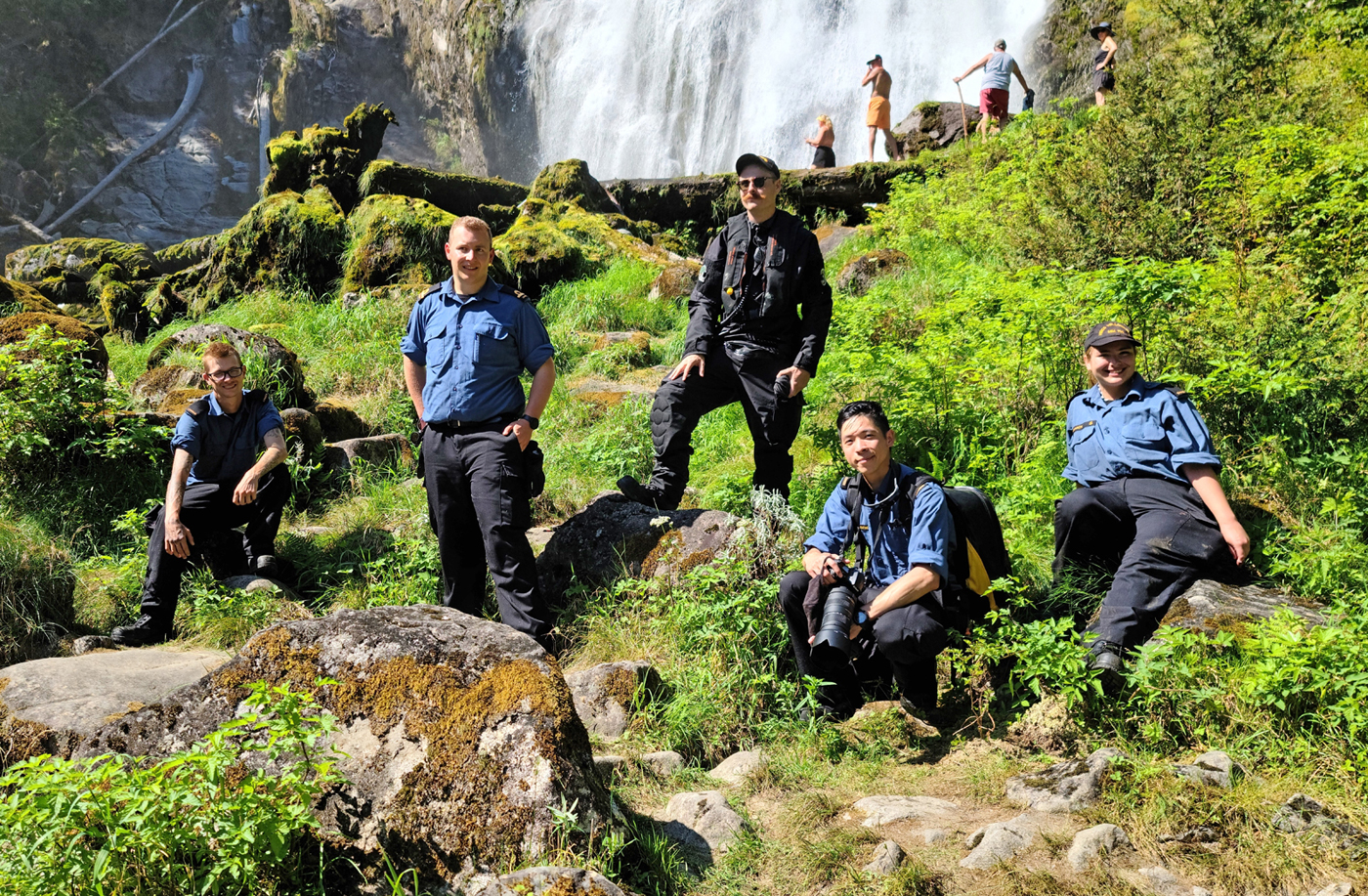Shawinigan NWO III students develop core skills at sea
By Lookout on Aug 10, 2021 with Comments 0

Members of HMCS Yellowknife at Chatterbox Falls in Princess Louisa Inlet as they conducted an over-the-horizon boat mission for long range communications planning and a quick shore recce. Personnel from left to right are: S3 Herrington, A/SLt Boerger, S1 Krolikowski, S1 Saygnavong and S3 Belanger.
A/SLt Jonathan Boerger
NWOIII Student
––
Getting to sail in an HMC Ship for the first time is one of those exciting navy experiences that, for Naval Warfare Officers (NWO), is generally reserved for when you have completed phase training at Naval Fleet School (Pacific) Venture.
For the students of the Shawinigan NWO III course, we were able to experience this during our core skills sea phase aboard HMCS Yellowknife, HMCS Whitehorse and HMCS Saskatoon. Being a course primarily composed of Reserve Force members, the opportunity to sail aboard a commissioned warship was unique and invaluable to our progression in becoming Naval Warfare Officers.
The core skills sea phase is the first time we were able to put into practice core bridge watch keeping, contact avoidance, and coastal navigation skills that we developed through two months of in-class learning and two weeks of practical introduction at the Navigation and Bridge Simulators (NABS).
Although it was exciting and rewarding to put into practice everything we had learned ashore, the most memorable aspect of the sail was integrating into the crews of these three Maritime Coastal Defence Vessels (MCDV).
Not only did the ships’ companies build a program to support the core skills sea phase requirements, they also included fun and interesting value-added evolutions that enhanced our training and gave us an early introduction to more complex naval operations that we normally wouldn’t be exposed to until later in our training.
Over the course of the sail we were introduced to task group exercises, maneuvers and formation steaming, .50cal gunnery exercises, flight operations with a CH-149 Cormorant helicopter, and pilotage.
Additionally, we were given the opportunity to develop our planning skills by working closely with the ship’s operations officers as the student duty operations officer.
Furthermore, we had the opportunity to plan and execute small boats missions. These missions included over-the-horizon boat operations where we were given a small party task accomplishable with the ship’s RHIB. This required us to engage key stakeholders on board the ship in order to create and execute a mission plan to produce an end product.
Building on skills learned at basic training and NWO II, we successfully completed Maritime Port Information Packages for both Port Hardy and Port McNeil, and we conducted shore expeditions to Eucott hot springs and Chatterbox Falls.
Overall, our two weeks at sea on board Yellowknife and the other MCDVs were a great learning experience and an amazing early exposure to Royal Canadian Navy operations. In fact, the fun that we had on board is convincing many of us to component transfer over to the Regular Force.
More importantly, the skills we learned aboard MCDVs will provide us with many benefits as we progress through our NWO phase training and proceed into the fleet. We’re looking forward to what the future holds for us.
––––
Filed Under: Top Stories
About the Author:





